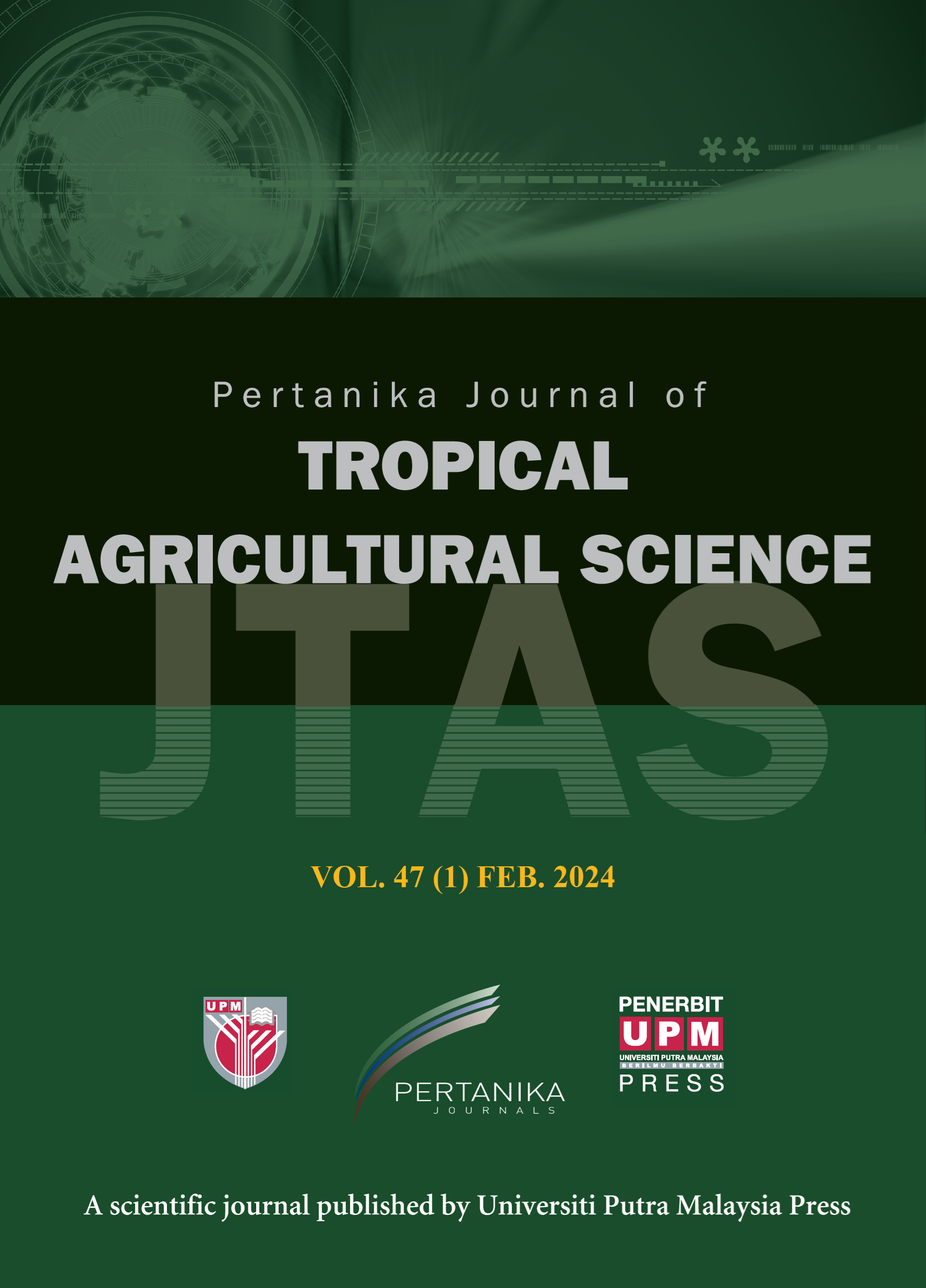PERTANIKA JOURNAL OF TROPICAL AGRICULTURAL SCIENCE
e-ISSN 2231-8542
ISSN 1511-3701
Viruses Infecting Garlic in Indonesia: Incidence and its Transmission to Shallot and Spring Onion
Dhayanti Makyorukty, Sari Nurulita, Diny Dinarti and Sri Hendrastuti Hidayat
Pertanika Journal of Tropical Agricultural Science, Volume 48, Issue 3, May 2025
DOI: https://doi.org/10.47836/pjtas.48.3.11
Keywords: Frequency of infection, mechanical inoculation, mixed-infection, reverse transcription PCR, virus transmission
Published on: 2025-05-16
Garlic (Allium sativum) is an important horticultural crop globally and in Indonesia. Its production faces significant challenges due to diseases caused by viral infections. Therefore, this study aimed to determine the distribution of garlic viruses across cultivation areas in Indonesia and analyze the potential for transmission to shallot (Allium cepa var. agregatum) and spring onion (Allium fistulosum L.). In the process, garlic leaves and bulbs samples were collected from several growing areas in West Nusa Tenggara, Central Java, West Java, and East Java. Onion yellow dwarf virus (OYDV), leek yellow stripe virus (LYSV), garlic common latent virus (GCLV), and shallot latent virus (SLV) were detected by reverse transcription-polymerase chain reaction method using specific primers. The results showed that mixed infections of several viruses were more common than the single form. The average frequency of viral infection in order from the highest was LYSV (75.15%), OYDV (64.95%), SLV (36.47%), and GCLV (26.66%). Single isolates of LYSV, OYDV, GCLV, and SLV were selected for the transmission experiment in the screen house, and each was inoculated mechanically to shallot (cultivars Sanren F1 and Lokananta) and spring onion (cultivar Blaze F1). All viruses were successfully transmitted to shallot, but only LYSV, OYDV, and SLV could be mechanically transmitted to spring onion. The infection of shallot and spring onion significantly affected the number of bulbs but had no considerable effect on plant height, leaf number, and bulb diameter.
ISSN 1511-3701
e-ISSN 2231-8542




